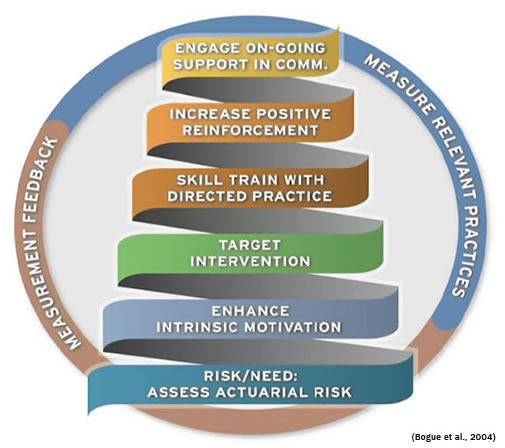This is the 1st of a 12 part series on Evidence Based Principles. Subscribe to our blog and get the blog delivered right to your inbox.
Defining EBP
Evidence: that which tends to prove or disprove something; ground for belief, proof. 
In other words, it is no longer acceptable to just “wing it” and base offender interventions on “my personal experience” or “what seems to make the most sense.” Fortunately, there is a growing group of EBP experts who publish findings and explanations on a regular basis. The amount of proof is growing!
Based: a fundamental principle or groundwork; foundation; basis.
When proven interventions (i.e., evidence) are part of the foundation of a treatment program, it's impossible to identify where treatment begins and where it ends. Treatment is not an event or even a series of events. Treatment is fundamental. Every activity, every decision and every moment are part of the treatment process.
Principle: a basis of conduct or management.
Large segments of community corrections have long endorsed the ideas of EBP. It all makes sense, and as it gains political momentum, it is making more and more sense. Learning the language of EBP is important, unfortunately, that is where many agencies stop. They have maintained their current practices but now use EBP language to refer to various components. t does not work that way! Ultimately, EBP is not just about believing, using lingo, or preaching. The idea is one of a guiding principle of conduct, not belief.
The Goal of EBP
Inherent in the idea of EBP, but not necessarily embodied in its initials, is the concept that the goal of community corrections is to reduce recidivism among offenders. This is not a small issue as presumably there could be evidence based principles that are based solely on the idea that all corrections is about incapacitation or retribution. The author accepts the idea that the goal of community corrections is to reduce future criminal behavior and writes about EBP with that purpose in mind.
In “Implementing Evidence-Based Principles in Community Corrections: The Principles of Effective Intervention,” the primary author, Brad Bogue, and his co-authors have done an outstanding job of defining the necessary principles for an effective treatment program. In the author’s view, it is the most influential correctional article since Robert Martinson’s infamous 1974 “Nothing Works” article. Actually entitled, “What works? Questions and answers about prison reform,” the novice interpretations of varied data trends ushered in decades of correctional policy that explicitly denied the value of any efforts to rehabilitate. While many authors published questions and research counter to the “Nothing Works” concept, Mr. Bogue and colleagues provided a summary of the offender rehabilitation research in a manner that allowed practitioners, policy makers and other researchers to embrace its conclusions and move forward together. In fact, unless you have been living under a rock, you have no doubt seen the related graphic below.

A Simplified and Applied Approach to EBP
In the next 11 blogs, we have attempted to provide a “simplified” and “applied” view of the original eight principles, plus three additional concepts that we added for emphasis, of effective intervention. To be clear, we do not disagree with anything in the original article. Our take is completely congruent with the original eight principles, but adds emphasis in places where clinical or training experience suggests that the original work left questions or silently assumed concepts that we believe need to be explicitly addressed. In other words, we attempt to simplify the concepts for front line staff and provide an applied perspective for daily operations on the ground.
Subscribe to our blog and get the info you want delivered right to your inbox.
 This a 12 part series. Here are all 12 blogs in the series:
This a 12 part series. Here are all 12 blogs in the series:
- An Introduction to Evidence Based Principles (EBP)
- EBP: Building the Therapeutic Relationship
- Community Corrections Interventions Must Begin with Assessment
- To Be or Not to Be: Framing Offender Motivation
- EBP: How Good is Your Aim?
- Discovering Values in Collaboration
- Practice Makes...Habit
- Structure & Accountability Still Matter!
- Catch Them Being Good!
- It Takes a Community to Transition an Offender
- What Works Anyway? Prove it!
- Feedback Please!


